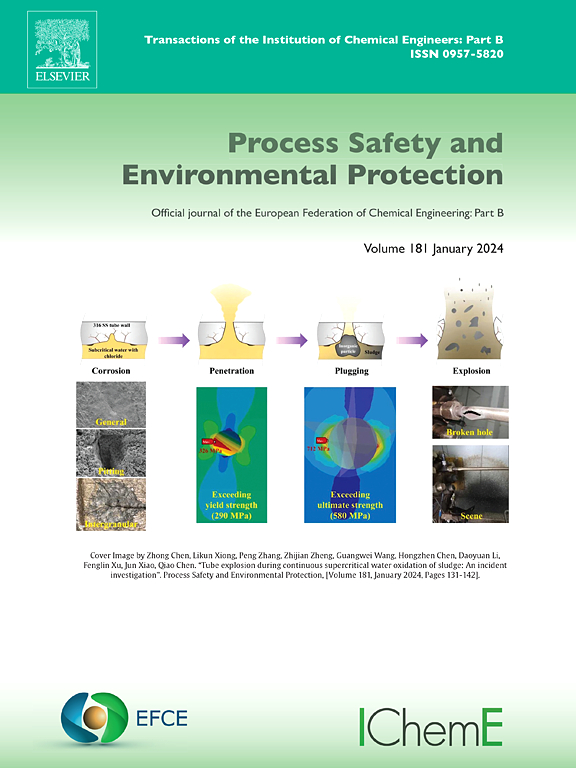高温聚合物电解质燃料电池质子交换膜的设计与研制进展
IF 6.9
2区 环境科学与生态学
Q1 ENGINEERING, CHEMICAL
引用次数: 0
摘要
高温质子交换膜燃料电池(ht - pemfc)具有反应动力学快、抗CO杂质能力强、水热管理平衡好等优点,被认为是一种势能转换技术。由于传统质子交换膜(PEMs)在高温和低湿条件下性能显著下降,研究人员开发了新的质子交换膜或复杂的改性工艺,以获得稳定的机械性能、良好的质子导电性、更好的热稳定性和更长的使用寿命。本文综述了两类高温质子交换膜(ht - pem)的最新进展:(1)改性全氟磺酸(PFSA)型ht - pem;(2)芳香族聚合物基HT-PEMs,重点是聚苯并咪唑(PBI)膜及其复合膜。然后概述了聚合物膜,如聚芳醚酮(PAEK),聚酰亚胺(PI),聚醚砜(PESs),聚砜(PSFs)和聚苯乙烯氧化物(PPO)。我们分别研究了在PFSA膜上添加短侧链、添加添加剂、修饰芳香聚合物膜的主链结构、侧链接枝、交联改性、掺杂改性和嵌段共聚对性能的影响。在总结上述膜材料的制备方法、改性方法和核心性能的基础上,分析了质子传导机理,并提出了HT-PEMs未来的研究方向和实际应用前景。本文章由计算机程序翻译,如有差异,请以英文原文为准。
Advances in design and development of proton-exchange membranes for high-temperature polymer electrolyte fuel cells
High-temperature proton exchange membrane fuel cells (HT-PEMFCs) are considered as the potential energy conversion technology owing to the fast reaction kinetics, strong resistance to CO impurities, and better water and thermal management balance. Due to the significant decrease in performance of traditional proton exchange membranes (PEMs) at high temperatures and low humidity, researchers have developed new PEMs or complex modification processes to achieve stable mechanical properties, decent proton conductivity, better thermal stability, and longer service life. This paper reviews the latest developments in two types of high-temperature proton exchange membranes (HT-PEMs): (1) modified perfluorosulfonic acid (PFSA) type HT-PEMs; (2) aromatic polymer-based HT-PEMs, with a focus on polybenzimidazole (PBI) membranes and their composite membranes. It then provides an overview of polymer membranes such as polyaryletherketone (PAEK), polyimide (PI), polyether sulfone (PESs), polysulfone (PSFs), and polyphenylene oxide (PPO). We separately investigated the effects of adding short side chains to the PFSA membrane, incorporating additives, modifying the main chain structure of the aromatic polymer membrane, side chain grafting, crosslinking modification, doping modification, and block copolymerization on the performance. Based on the summary of the preparation method, modification method and core properties of the above-mentioned membrane materials, the proton conduction mechanism was analyzed, and the future research direction and prospect of practical application of HT-PEMs were put forward.
求助全文
通过发布文献求助,成功后即可免费获取论文全文。
去求助
来源期刊

Process Safety and Environmental Protection
环境科学-工程:化工
CiteScore
11.40
自引率
15.40%
发文量
929
审稿时长
8.0 months
期刊介绍:
The Process Safety and Environmental Protection (PSEP) journal is a leading international publication that focuses on the publication of high-quality, original research papers in the field of engineering, specifically those related to the safety of industrial processes and environmental protection. The journal encourages submissions that present new developments in safety and environmental aspects, particularly those that show how research findings can be applied in process engineering design and practice.
PSEP is particularly interested in research that brings fresh perspectives to established engineering principles, identifies unsolved problems, or suggests directions for future research. The journal also values contributions that push the boundaries of traditional engineering and welcomes multidisciplinary papers.
PSEP's articles are abstracted and indexed by a range of databases and services, which helps to ensure that the journal's research is accessible and recognized in the academic and professional communities. These databases include ANTE, Chemical Abstracts, Chemical Hazards in Industry, Current Contents, Elsevier Engineering Information database, Pascal Francis, Web of Science, Scopus, Engineering Information Database EnCompass LIT (Elsevier), and INSPEC. This wide coverage facilitates the dissemination of the journal's content to a global audience interested in process safety and environmental engineering.
 求助内容:
求助内容: 应助结果提醒方式:
应助结果提醒方式:


